An exhibition to recover a forgotten Italian Belle époque artist, namely Juana Romani (Carolina Carlesimo; Velletri, 1867 - Suresnes, 1923): it is titled Juana Romani (1867-1923), modèle et peintre. Un rêve d’absolu and runs from May 19 to September 19, 2021 at the Musée Roybet Fould in Courbevoie, just outside Paris. Born in Velletri in 1867 as Carolina Carlesimo, Juana Romani ended her life in a room at the psychiatric clinic in Suresnes, near Paris. A figure with a tragic destiny, Juana Romani became the best-known Italian painter in late 19th-century Paris: her dream, similar to that of the Symbolists and Pre-Raphaelites, was that of an absolute art, translated into portraits of women embodying nostalgia and eroticism.
Modeling in Parisian academies and ateliers, she learned the craft from the artists for whom she posed, pursuing, more than glory, the recognition of her masters and of that Italy which, left as a child, she continued to love with a “wild sentiment” (thus Luigi Callari). Despite a brief artistic training with the artists she frequented as a model, she knew a dazzling career that would establish her among the celebrities of the belle époque. Her painting, heir to a pictorial tradition linked to the antiquity and marked by the influence of her masters (from Jean-Jacques Henner to Ferdinand Roybet), stages strong and sensual female figures drawn from biblical history, theater, opera, history and art history. Juana Romani’s career came to an abrupt end in 1903 due to the onset of mental disorders. An artist with a fictional destiny, a talented painter whose career spans less than twenty years, Juana Romani embodies a singular path of a woman artist.
After the first Italian retrospective, held at the Convent of the Carmine in Velletri between 2017 and 2018, strongly desired by Tiziana DAcchille, director of the Academy of Fine Arts of Rome, and curated by Professor Marco Nocca (Academy of Fine Arts of Rome), Gabriele Romani and Alessandra de Angelis, the first French retrospective for Juana Romani thus arrives. The exhibition, curated by Emmanuelle Trief-Touchard, Marion Lagrange and Gabriele Romani, features nearly a hundred works including paintings, sculptures, drawings, photographs, prints, period newspapers and clothes from French museums and private collections. The exhibition is divided into three sections: The Lesson of the Masters, Becoming a Painter, In Roybet’s Atelier.
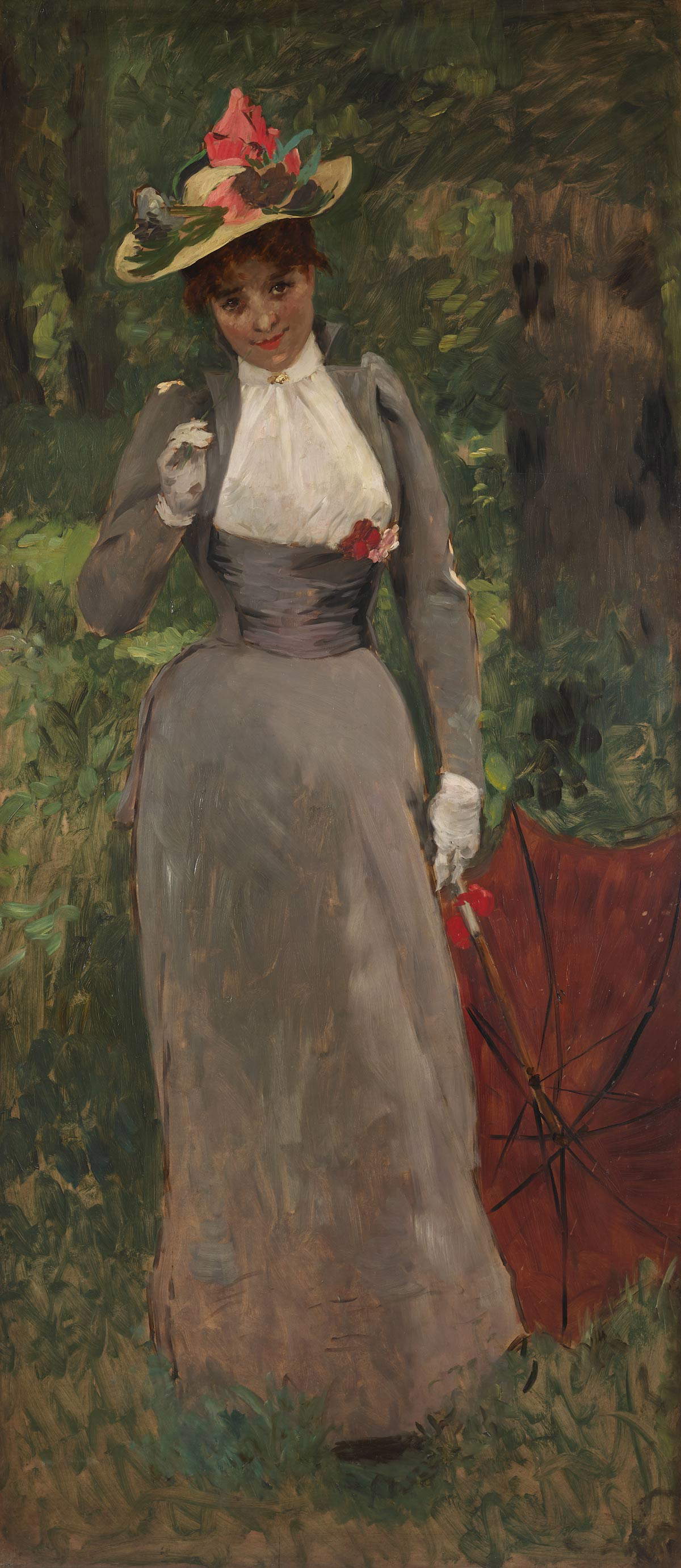 |
| Ferdinand Roybet, Portrait of Juana Romani (ca. 1892; oil on panel; Courbevoie, Musée Roybet Fould). Photo by Franck Boucou |
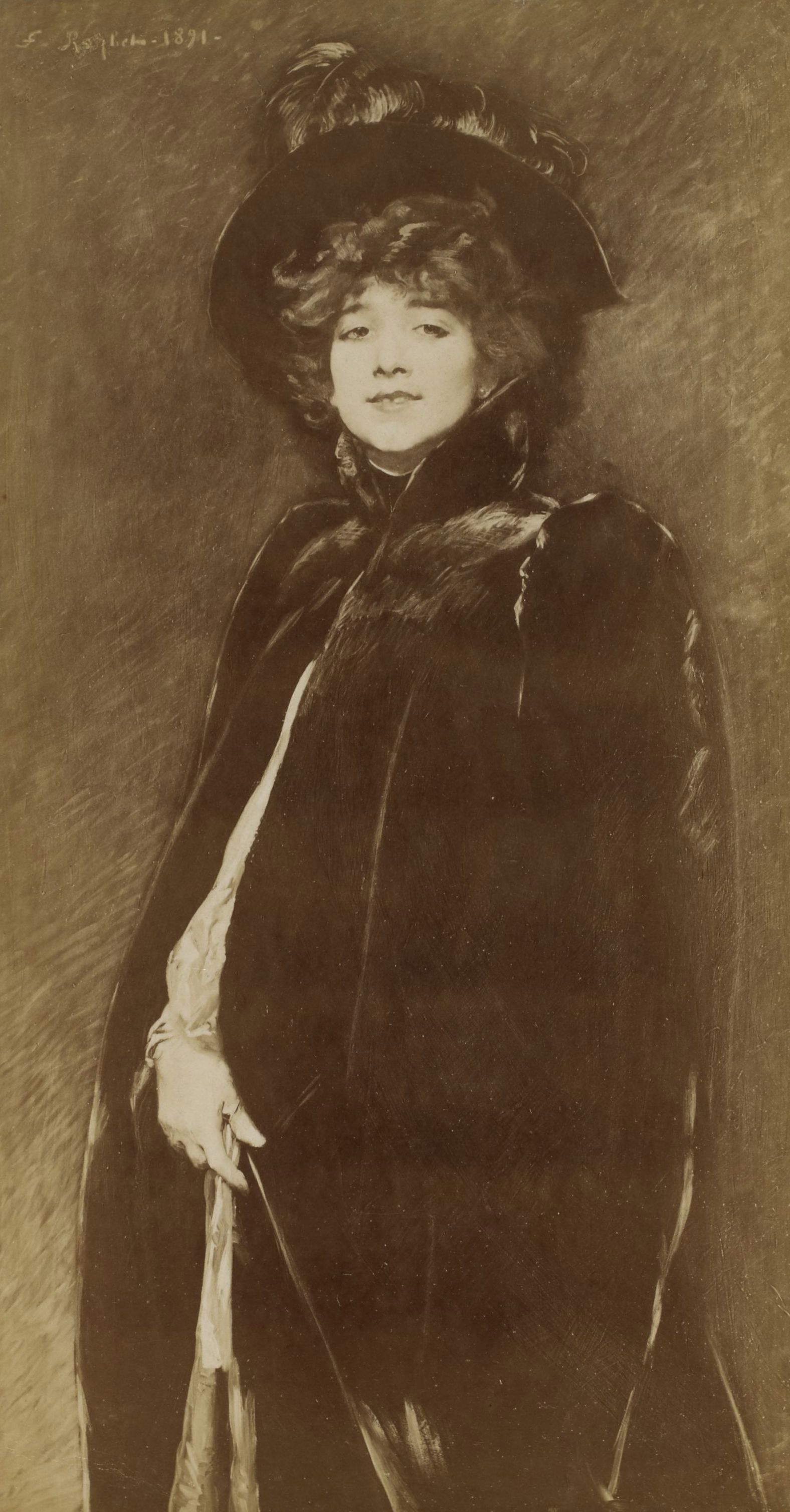 |
| Ferdinand Roybet, Portrait of Juana Romani (1891; photograph; Courbevoie, Musée Roybet Fould) |
![Ferdinand Roybet, Portrait of Juana Romani (s.d. [1890]; oil on panel; Courbevoie, Musée Roybet Fould, inv. 2020.4). Photo by Franck Boucourt Ferdinand Roybet, Portrait of Juana Romani (s.d. [1890]; oil on panel; Courbevoie, Musée Roybet Fould, inv. 2020.4). Photo by Franck Boucourt](https://cdn.finestresullarte.info/rivista/immagini/2021/fn/ferdinand-roybet-juana-romani-1890.jpg
) |
| Ferdinand Roybet, Portrait of Juana Romani (s.d. [1890]; oil on panel; Courbevoie, Musée Roybet Fould, inv. 2020.4). Photo by Franck Boucourt |
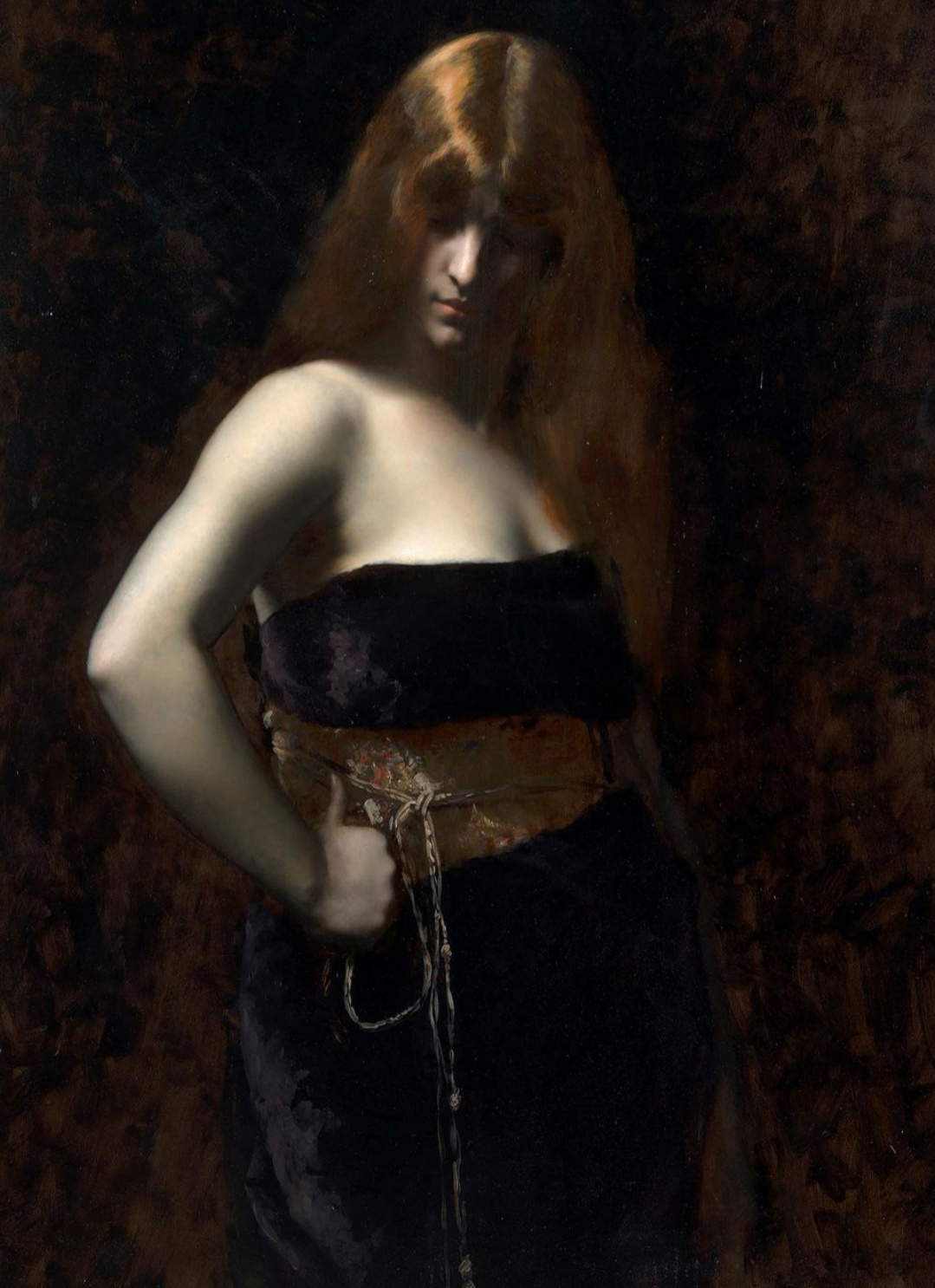 |
| Juana Romani, Judith (1890; oil on panel; London, private collection) |
The first section opens the exhibition with paintings and sculptures by the great masters of 19th-century French art history, such as sculptors Alexandre Falguière and Victor Peter and painters Carolus-Duran, André Rixens, Victor Prouvé, Ferdinand Roybet, and Jean-Jacques Henner: artists for whom Juana posed between 1883 and 1890. Juana Romani’s presence in the ateliers of many Parisian masters is attested by a multiplicity of portraits found during research and reading of Salon accounts in the press of the time. Voluntary and independent, the young Juana seduced the old Prix de Rome winners who found in her the grace and wild expressiveness of a youthful face and body that embodied a kind of quintessential Italian. From 1882, she worked for Alexandre Falguière, who exhibited at the 1884 Salon a Nymphe chasseresse that did not leave the public and critics indifferent. At the same time Victor Peter, a pupil of the master, produced an allantica medallion depicting a Juana Romani in the natural state of mind with an astonishing freshness that breaks with the hieratic appearance of the official portraits. The nymph motif also seemed to inspire painter Ferdinand Roybet, who chose her to embody a Diana pursuing the young Actaeon transformed into a stag. In Roybet’s studio, La Séance de pose showcases a community of artists with whom Juana Romani is trained to practice the craft of painting.
A figure in the Italian community in Paris, Juana Romani sinserted herself into the environment of Italian models within a network already linked to Parisian ateliers and academies. She worked equally for lacadémie Julian and lacadémie Colarossi whose founder, born in Picinisco (Frosinone), accompanied her in her early stages of training. Close to Jean-Jacques Henner and Carolus-Duran, the two most important masters of her career as a model and then painter, Juana Romani probably frequentedlatelier des dames. Her training continued with Ferdinand Roybet and many other artists, such as Victor Prouvé. Taking advantage of a supportive group of artists from all over France, Juana frequents poets and art critics such as Armand Silvestre and Roger-Milès. An assiduous reader, she trained as a self-taught artist, letting herself be influenced by encounters, travels, readings and the history of art, attracting the admiration of critics and the public. Exhibiting at the Salon beginning in 1888, she established herself during the 1890s as an independent and talented artist, recognized in France and then in Italy.
The second section, Becoming a Painter, presents Juana as an assiduous worker studying in museums and in the ateliers of her professors, discovering a passion for the old masters such as Velázquez, Correggio, Titian, Leonardo da Vinci, and Rembrandt, making perceptible syntheses in her choice of subjects and manner of painting. The delicacy and sensuality of the poses and expressions seduce critics.Juana Romani’s works are identifiable by a personal style, minimalist in imposition and narrative. The essentially female portraits form a gallery of despression heads inspired by literature and the dopera librettos in vogue to bring a receptive audience closer to an imaginary bohemianism that coincides with the idea of total art where painting, literature, theater, and poetry come together in all their complementarity. Finally, the third section, Nellatelier di Roybet, continues the narrative to the period after her meeting with the painter Ferdinand Roybet around 1882: Juana Romani would never again leave the master with whom she shared her atelier at 24, rue du Mont-Thabor in Paris. Absent from the official Salon for twenty years, it is with a portrait of his pupil that Roybet returns in 1892, a year that also marks a change in the two artists’ careers. They traveled together to Italy and Spain, frequenting the same circles of artist friends, critics, journalists and poets and sharing the same buyers. Roybet was present during the long period of internment, becoming Juana Romani’s legal guardian in 1909. For her part, Juana Romani had no pupils with the exception of the Lyons photographer Antoine Lumière, father of the inventors of the cinematograph, who defined himself primarily as a friend. At the turn of the century, female artists paid tribute to her such as the Fould sisters (Consuelo Fould and Georges Achille-Fould) but also Laura Leroux by emphasizing their filiation with explicit references. Juana Romani’s manner would often be imitated but without being given a legitimate space in the corpus of women painters of the belle époque.
![Juana Romani, Boy with Earrings (s.d. [c. 1890]; oil on panel; Courbevoie, Musée Roybet Fould, inv.2020.3). Photo by Franck Boucourt Juana Romani, Boy with Earrings (s.d. [c. 1890]; oil on panel; Courbevoie, Musée Roybet Fould, inv.2020.3). Photo by Franck Boucourt](https://cdn.finestresullarte.info/rivista/immagini/2021/fn/juana-romani-ragazzo-con-orecchini.jpg
) |
| Juana Romani, Boy with Earrings (s.d. [c. 1890]; oil on panel; Courbevoie, Musée Roybet Fould, inv.2020.3). Photo by Franck Boucourt |
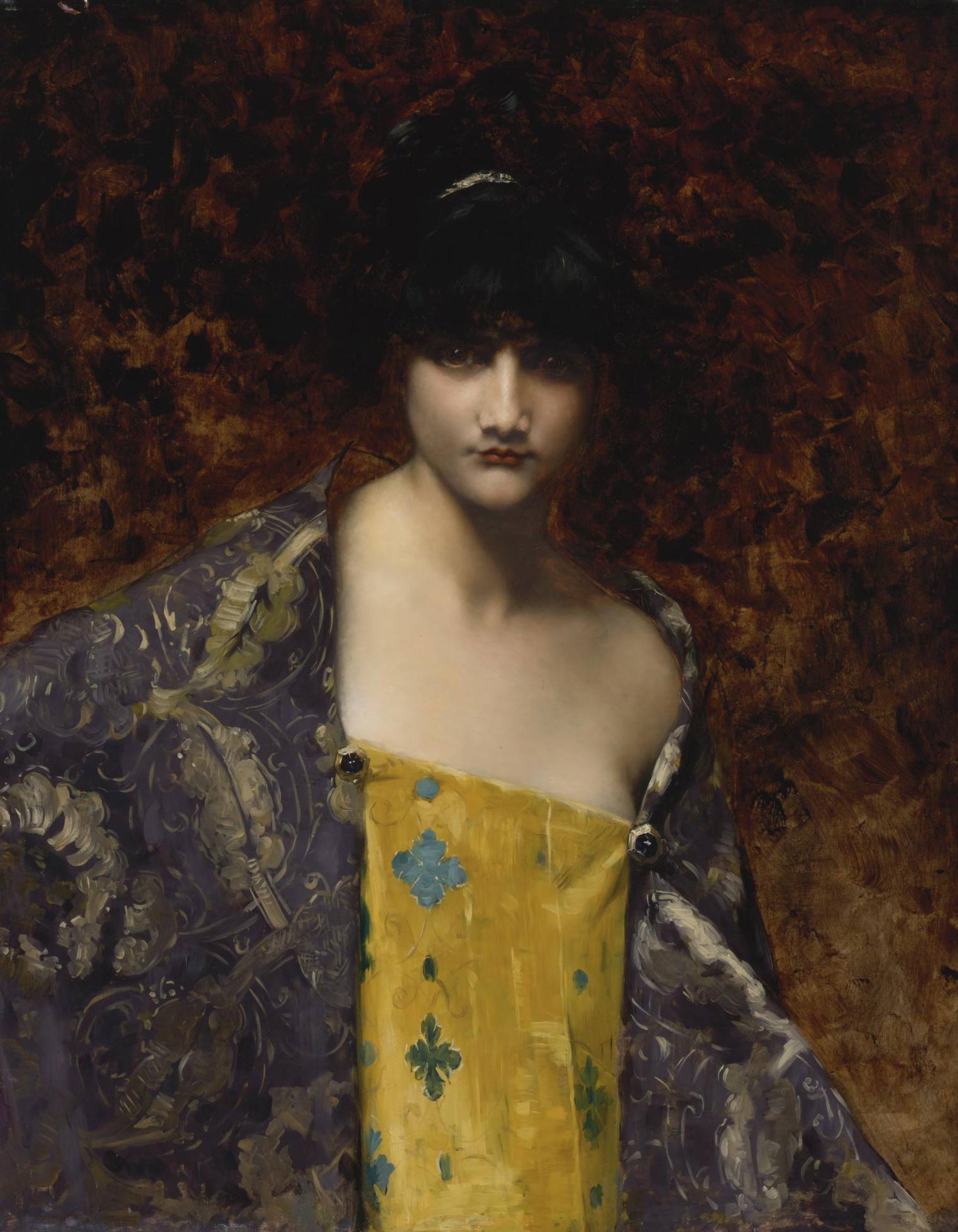 |
| Juana Romani, La Fille de Théodora (1893; oil on panel; Paris,private collection) |
![Juana Romani, Joven Oriental (Bohémienne) (s.d. [1892]; oil on panel; Buenos Aires, Museo Nacional de Bellas Artes, inv. 2326) Juana Romani, Joven Oriental (Bohémienne) (s.d. [1892]; oil on panel; Buenos Aires, Museo Nacional de Bellas Artes, inv. 2326)](https://cdn.finestresullarte.info/rivista/immagini/2021/fn/juana-romani-joven-oriental.jpg
) |
| Juana Romani, Joven Oriental (Bohémienne) (s.d. [1892]; oil on panel; Buenos Aires, Museo Nacional de Bellas Artes, inv. 2326) |
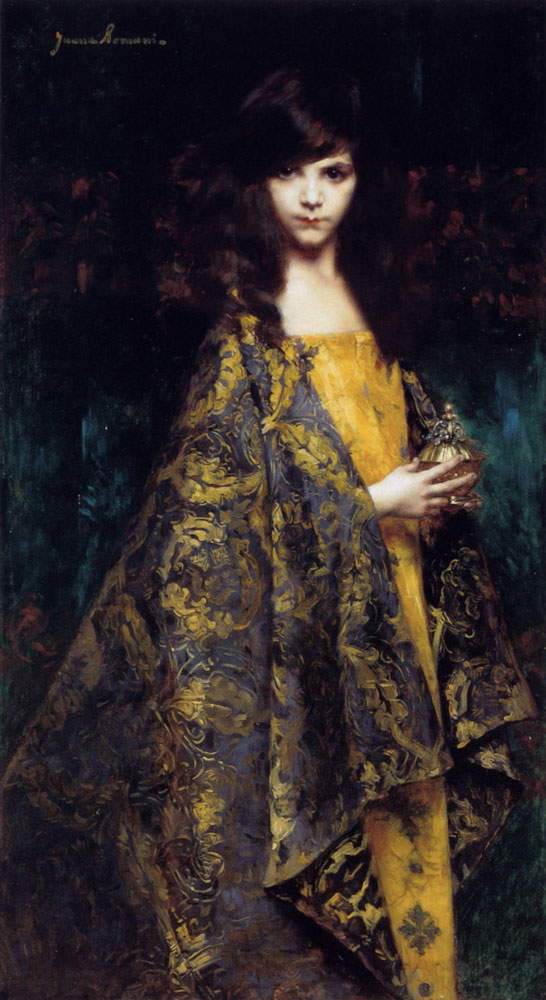 |
| Juana Romani, Angelica (1898; oil on panel) |
Born in Velletri with the name Carolina Carlesimo on April 30, 1867, to Giacinto Carlesimo (1841-1876) and Marianna Schiavi (1848-1909), a brigand and a seamstress of Ciocian origins (Gallinaro and Casalvieri), Juana began her adventurous life as a child: her mother, abandoned by her husband, took her with her to the Romani household (a family of landowners in the small town in Latium, originally from the Republic of Venice) where she was hired as a maid. Following her relationship with Temistocle Romani (1836-1896), the musician son of the wealthy landlord, Marianna moved in 1877 with the little girl and her companion to Paris, where they married in 1878.
Intertwined in Romani were the skills of the modeling and painting trades, which Juana, as a teenager, experimented with in private academies: she attended the ateliers of Jean-Jacques Henner (1829-1905), Carolus Duran (1837-1917) and Ferdinand Roybet (1840-1920). She began, at the age of fourteen, her modeling profession at lAcadémie Julian and Colarossi. She soon abandoned the private academies, crowded, according to her, “with talentless artists,” and turned to those who were more inclined to indulge her aspirations as a painter. Alexandre Falguière’s (1831-1900) Nymphe Chasseresse of 1884, the year in which Carolina created her pseudonym “Juana Romani,” launched her modeling career: important was her encounter with Carolus-Duran, a painter who, according to Zola, “made Manet comprehensible to the bourgeoisie,” and again with Victor Prouvé (1858-1943). She posed for Raphaël Collin (1850-1916) and Jean-Jacques Henner, the “painter of nymphs,” who portrayed her in numerous idealized studies. Romani, from 1884, would become model and muse for Ferdinand Roybet (1840-1920): she appears in genre scenes and exclusive portraits that celebrate her beauty and affirm her status as a woman painter. Experience as a model immediately offered Juana the opportunity to become aware of her talent and to acquire the rudiments of painting from the artists for whom she posed: from the director of Colarossi to Prouvé, who let Juana scribble her preparatory studies. Litaliana, as early as 1887, began taking lessons probably allatelier des dames, a painting school reserved for women, from Henner and in the same years from Roybet, who directed her to the genre of costume portraiture.
In 1888, at the age of twenty-one, Romani participated in her first Salon, showing the public her ability to render the female lincarnate. With trips to Italy in 1892 and Spain in 1893, Juana became acquainted with Byzantine art and, at the Prado Museum, with the works of Velázquez, acquiring new fascinations from the art of the past. In a short time, the painter stands out, with a highly personal style that draws inspiration from the culture of the Flemish and Italian seventeenth century, winning over critics of the time (Armand Silvestre, Josephin Péladan, Hernst Hoschedé, Rubén Darío, Vittorio Pica). Juana Romani’s inspiration, linked to a profound reflection on the feminine universe and the Venetian school of the late 16th century, is often addressed to literary characters (Angelica, Graziella), famous women of the biblical tradition (Salome, Herodias, Judith), protagonists of operas (Desdemona, Fior dAlpe) or known for historical events (Bianca Cappello, Beatrice and Leonora dEste, Joan of Arc), to whom the artist often lends her likeness, in works of “exaggerated feminism” (Armand Silvestre). Lartista will always refuse to join associations of femmes peintres, claiming a gender equality won in the field, in struggles on par with male artists, as a deep aspiration of her talent. She also became a testimonial for perfumes and for Vin Mariani (Bordeaux wine combined with leaves of the Coca plant from Peru) produced by the friend Angelo Mariani (1838-1914).
From 1888 to 1904 Juana participated in the Salon of the Société des Artistes Français, in exhibitions in the French province and abroad, beginning her career as a portrait painter of the European bourgeoisie and aristocracy, from Princess Murat and Duchess of Luynes to Baroness de Rothschild. A silver medalist at age twenty-two in the Italian painting section at the 1889 World’s Fair, Juana gained Italian notoriety with that of 1900. Her works Primavera, which Léon Mayet describes as “an idiot’s head escaped from the Salpêtrière,” and Salomé are purchased by the French state. In 1901 she paid an official visit to her hometown with master Roybet, sculptor Ernesto Biondi, poet Trilussa, and her friend Antoine Lumière, father of the Lumière brothers. To mark the occasion, Juana donated a cinematograph to the town, founded an annual prize for deserving pupils for the School of Arts and Crafts that would be named after her, and promised the creation of a contemporary art gallery composed of her personal collection and partly dedicated to the master Roybet. The project will never be realized, although the painter’s will finds partial fulfillment in Courbevoie in the Roybet museum founded in 1927 by the painter Consuelo Fould. The same year she is on show with Angelica (1898) in the Lazio room of the IV International Exposition darte of the city of Venice, receiving discordant judgments: France counts Juana among the “forty immortals” who represent Italy in the world, while at home she receives only scornful judgments for her obvious Parisianism that puts her in common with Boldini.
In 1903 she began, with psychotic crises, her sudden mental degeneration, caused, her journalist friend Jacopo Caponi recounts, by the distress she experienced from feeling unloved by Italy. In 1906 she was imprisoned in the Maison de Santé dIvry-sur-Seine, near Paris; in 1909 she was declared alienated. Until June 13, 1923, the date of her death, Juana Romani, “living but demented,” was interned in several French asylums.
The exhibition is accompanied by a catalog (24 x 21 format, 200 pages, color illustrations, with biography, essays and presentation of the artist’s works, on sale at the Roybet Fould museum for 25.00 , Ville de Courbevoie editions, 2021). For all information you can log on to the Roybet Fould Museum website.
![Juana Romani, Portrait of Temistocle Romani (s.d. [c. 1890], oil on panel; Lariano, private collection) Juana Romani, Portrait of Temistocle Romani (s.d. [c. 1890], oil on panel; Lariano, private collection)](https://cdn.finestresullarte.info/rivista/immagini/2021/fn/juana-romani-temistocle-romani.jpg
) |
| Juana Romani, Portrait of Temistocle Romani (s.d. [c. 1890], oil on panel; Lariano, private collection) |
![Jean-Andre? Rixens, Coquetterie [Portrait of Juana Romani] (1884; oil on canvas, Saint-Gaudens, Muse?e des arts & figures des Pyre?ne?es centrales). Photo by Franc?ois Pons Jean-Andre? Rixens, Coquetterie [Portrait of Juana Romani] (1884; oil on canvas, Saint-Gaudens, Muse?e des arts & figures des Pyre?ne?es centrales). Photo by Franc?ois Pons](https://cdn.finestresullarte.info/rivista/immagini/2021/fn/jean-andre-rixens-coquetterie.jpg
) |
| Jean-Andre? Rixens, Coquetterie [Portrait of Juana Romani] (1884; oil on canvas, Saint-Gaudens, Muse?e des arts & figures des Pyre?ne?es centrales). Photo by Franc?ois Pons |
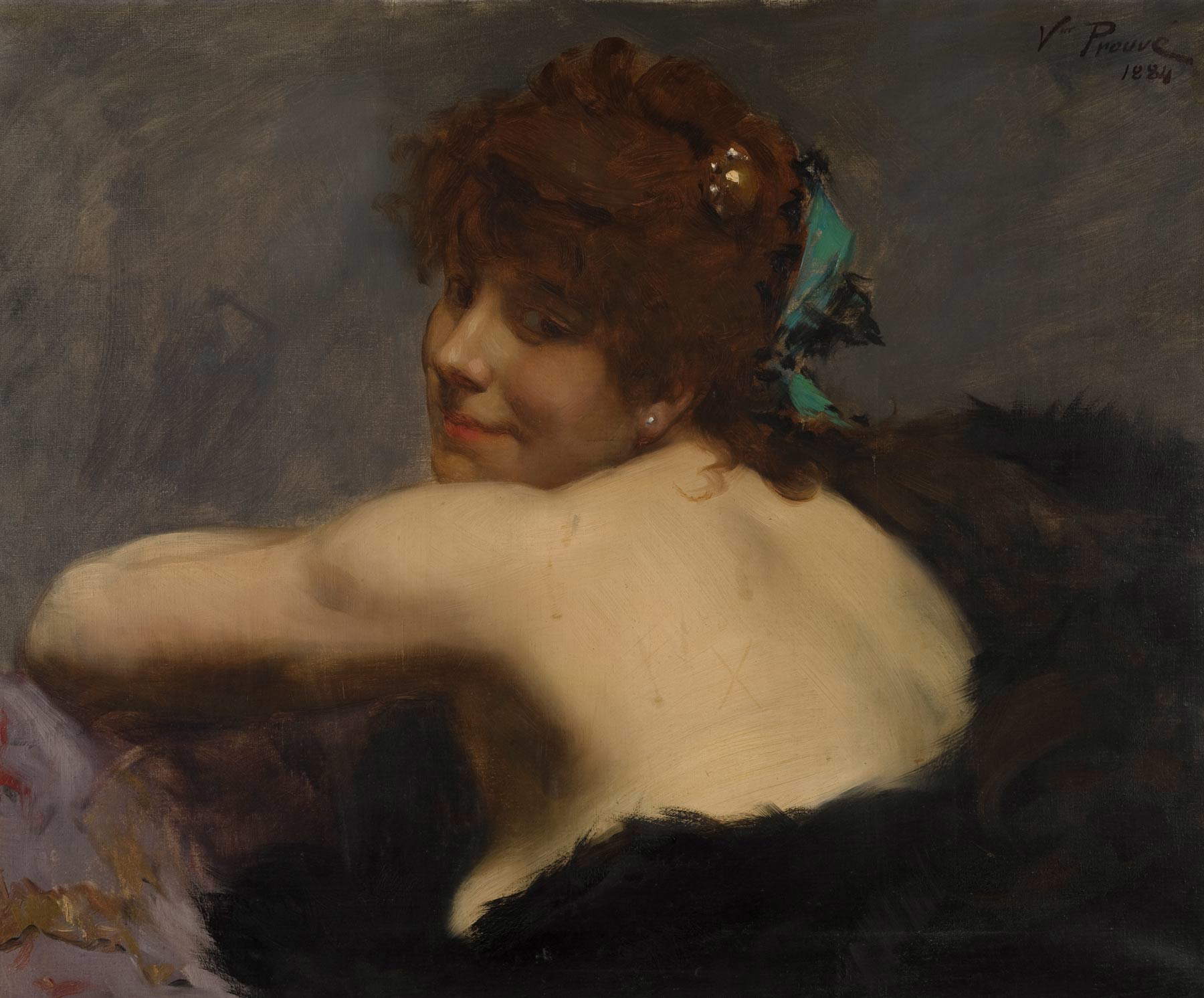 |
| Victor Prouvé, Figure of a Woman or Portrait of Juana Romani (1884; oil on canvas; Saint-Dizier, Musée municipal, inv.889.B36). Photo by Claude Philippot |
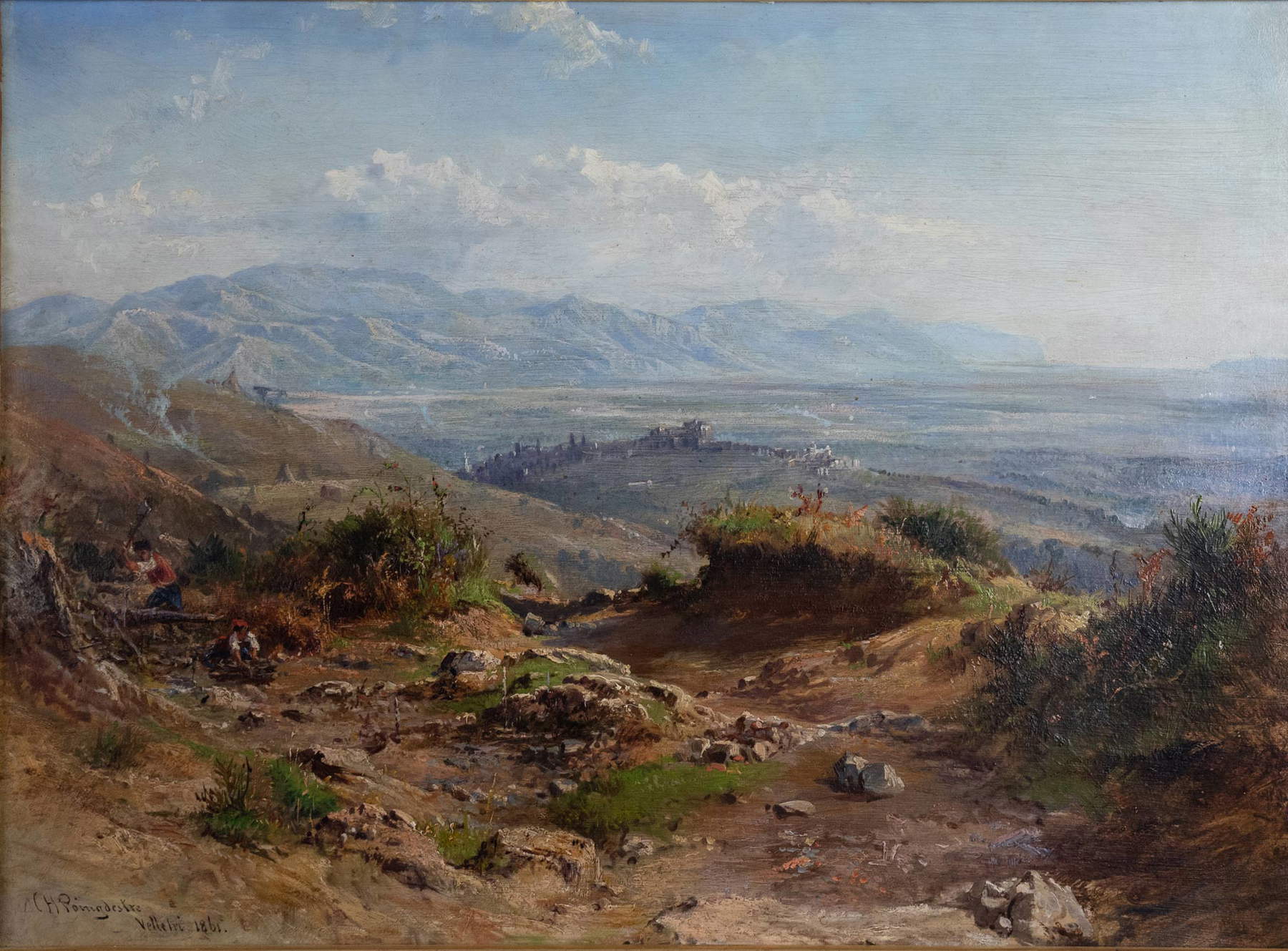 |
| Charles Henry Poingdestre, Velletri overlooking the Lepini Mountains and the Pontine Plain (1862; oil on canvas; Velletri, Umberto Savo Collection) |
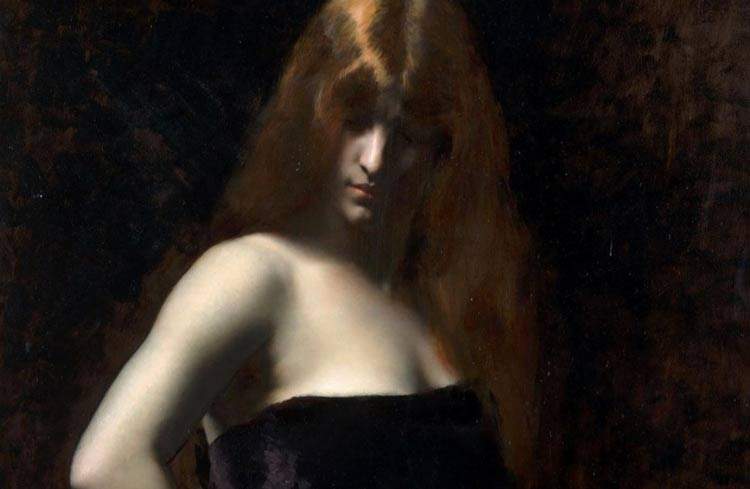 |
| An exhibition evokes the fictional life of Juana Romani, forgotten belle époque painter |
Warning: the translation into English of the original Italian article was created using automatic tools. We undertake to review all articles, but we do not guarantee the total absence of inaccuracies in the translation due to the program. You can find the original by clicking on the ITA button. If you find any mistake,please contact us.